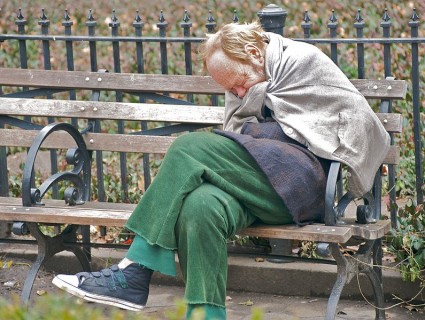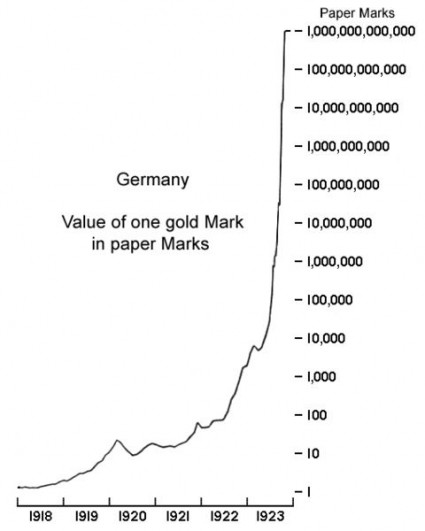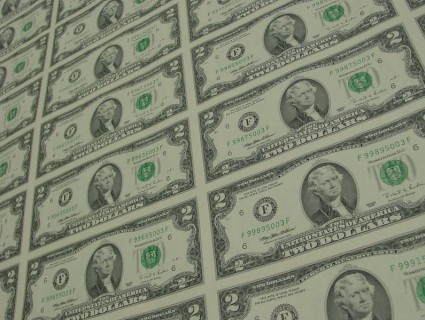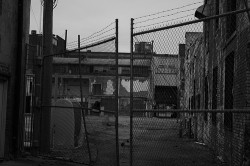 If the economy is getting better, then why does poverty in America continue to grow so rapidly? Yes, the stock market has been hitting all-time highs recently, but also the number of Americans living in poverty has now reached a level not seen since the 1960s. Yes, corporate profits are at levels never seen before, but so is the number of Americans on food stamps. Yes, housing prices have started to rebound a little bit (especially in wealthy areas), but there are also more than a million public school students in America that are homeless. That is the first time that has ever happened in U.S. history. So should we measure our economic progress by the false stock market bubble that has been inflated by Ben Bernanke’s reckless money printing, or should we measure our economic progress by how the poor and the middle class are doing? Because if we look at how average Americans are doing these days, then there is not much to be excited about. In fact, poverty continues to experience explosive growth in the United States and the middle class continues to shrink. Sadly, the truth is that things are not getting better for most Americans. With each passing year the level of economic suffering in this country continues to go up, and we haven’t even reached the next major wave of the economic collapse yet. When that strikes, the level of economic pain in this nation is going to be off the charts.
If the economy is getting better, then why does poverty in America continue to grow so rapidly? Yes, the stock market has been hitting all-time highs recently, but also the number of Americans living in poverty has now reached a level not seen since the 1960s. Yes, corporate profits are at levels never seen before, but so is the number of Americans on food stamps. Yes, housing prices have started to rebound a little bit (especially in wealthy areas), but there are also more than a million public school students in America that are homeless. That is the first time that has ever happened in U.S. history. So should we measure our economic progress by the false stock market bubble that has been inflated by Ben Bernanke’s reckless money printing, or should we measure our economic progress by how the poor and the middle class are doing? Because if we look at how average Americans are doing these days, then there is not much to be excited about. In fact, poverty continues to experience explosive growth in the United States and the middle class continues to shrink. Sadly, the truth is that things are not getting better for most Americans. With each passing year the level of economic suffering in this country continues to go up, and we haven’t even reached the next major wave of the economic collapse yet. When that strikes, the level of economic pain in this nation is going to be off the charts.
The following are 21 statistics about the explosive growth of poverty in America that everyone should know…
1 – According to the U.S. Census Bureau, approximately one out of every six Americans is now living in poverty. The number of Americans living in poverty is now at a level not seen since the 1960s.
2 – When you add in the number of low income Americans it is even more sobering. According to the U.S. Census Bureau, more than 146 million Americans are either “poor” or “low income”.
3 – Today, approximately 20 percent of all children in the United States are living in poverty. Incredibly, a higher percentage of children is living in poverty in America today than was the case back in 1975.
4 – It may be hard to believe, but approximately 57 percent of all children in the United States are currently living in homes that are either considered to be either “low income” or impoverished.
5 – Poverty is the worst in our inner cities. At this point, 29.2 percent of all African-American households with children are dealing with food insecurity.
6 – According to a recently released report, 60 percent of all children in the city of Detroit are living in poverty.
7 – The number of children living on $2.00 a day or less in the United States has grown to 2.8 million. That number has increased by 130 percent since 1996.
8 – For the first time ever, more than a million public school students in the United States are homeless. That number has risen by 57 percent since the 2006-2007 school year.
9 – Family homelessness in the Washington D.C. region (one of the wealthiest regions in the entire country) has risen 23 percent since the last recession began.
10 – One university study estimates that child poverty costs the U.S. economy 500 billion dollars each year.
11 – At this point, approximately one out of every three children in the U.S. lives in a home without a father.
12 – Families that have a head of household under the age of 30 have a poverty rate of 37 percent.
13 – Today, there are approximately 20.2 million Americans that spend more than half of their incomes on housing. That represents a 46 percent increase from 2001.
14 – About 40 percent of all unemployed workers in America have been out of work for at least half a year.
15 – At this point, one out of every four American workers has a job that pays $10 an hour or less.
16 – There has been an explosion in the number of “working poor” Americans in recent years. Today, about one out of every four workers in the United States brings home wages that are at or below the poverty level.
17 – Right now, more than 100 million Americans are enrolled in at least one welfare program run by the federal government. And that does not even include Social Security or Medicare.
18 – An all-time record 47.79 million Americans are now on food stamps. Back when Barack Obama first took office, that number was only sitting at about 32 million.
19 – The number of Americans on food stamps now exceeds the entire population of Spain.
20 – According to one calculation, the number of Americans on food stamps now exceeds the combined populations of “Alaska, Arkansas, Connecticut, Delaware, District of Columbia, Hawaii, Idaho, Iowa, Kansas, Maine, Mississippi, Montana, Nebraska, Nevada, New Hampshire, New Mexico, North Dakota, Oklahoma, Oregon, Rhode Island, South Dakota, Utah, Vermont, West Virginia, and Wyoming.”
21 – Back in the 1970s, about one out of every 50 Americans was on food stamps. Today, close to one out of every six Americans is on food stamps. Even more shocking is the fact that more than one out of every four children in the United States is enrolled in the food stamp program.
Unfortunately, all of these problems are a result of our long-term economic decline. In a recent article for the New York Times, David Stockman, the former director of the Office of Management and Budget under President Ronald Reagan, did a brilliant job of describing how things have degenerated over the last decade…
Since the S&P 500 first reached its current level, in March 2000, the mad money printers at the Federal Reserve have expanded their balance sheet sixfold (to $3.2 trillion from $500 billion). Yet during that stretch, economic output has grown by an average of 1.7 percent a year (the slowest since the Civil War); real business investment has crawled forward at only 0.8 percent per year; and the payroll job count has crept up at a negligible 0.1 percent annually. Real median family income growth has dropped 8 percent, and the number of full-time middle class jobs, 6 percent. The real net worth of the “bottom” 90 percent has dropped by one-fourth. The number of food stamp and disability aid recipients has more than doubled, to 59 million, about one in five Americans.
For the last couple of years, the U.S. economy has experienced a bubble of false hope that has been produced by unprecedented amounts of government debt and unprecedented money printing by the Federal Reserve.
Unfortunately, that bubble of false hope is not going to last much longer. In fact, we are already seeing signs that it is getting ready to burst.
For example, initial claims for unemployment benefits shot up to 385,000 for the week ending March 30th.
That is perilously close to the 400,000 “danger level” that I keep warning about. Once we cross the 400,000 level and stay there, it will be time to go into crisis mode.
In the years ahead, it is going to become increasingly difficult to find a job. Just the other day I saw an article about an advertisement for a recent job opening at a McDonald’s in Massachusetts that required applicants to have “one to two years experience and a bachelor’s degree“.
If you need a bachelor’s degree for a job at McDonald’s, then what in the world are blue collar workers going to do when the competition for jobs becomes really intense once the economy experiences another major downturn?
Do not be fooled by the fact that the Dow has been setting new all-time highs. The truth is that we are in the midst of a long-term economic decline, and things are going to get a lot worse. If you know someone that is not convinced of this yet, just share the following article with them: “Show This To Anyone That Believes That ‘Things Are Getting Better’ In America“.
So what are all of you seeing in your own areas?
Are you seeing signs that poverty is getting worse?
Please feel free to post a comment with your thoughts below…




